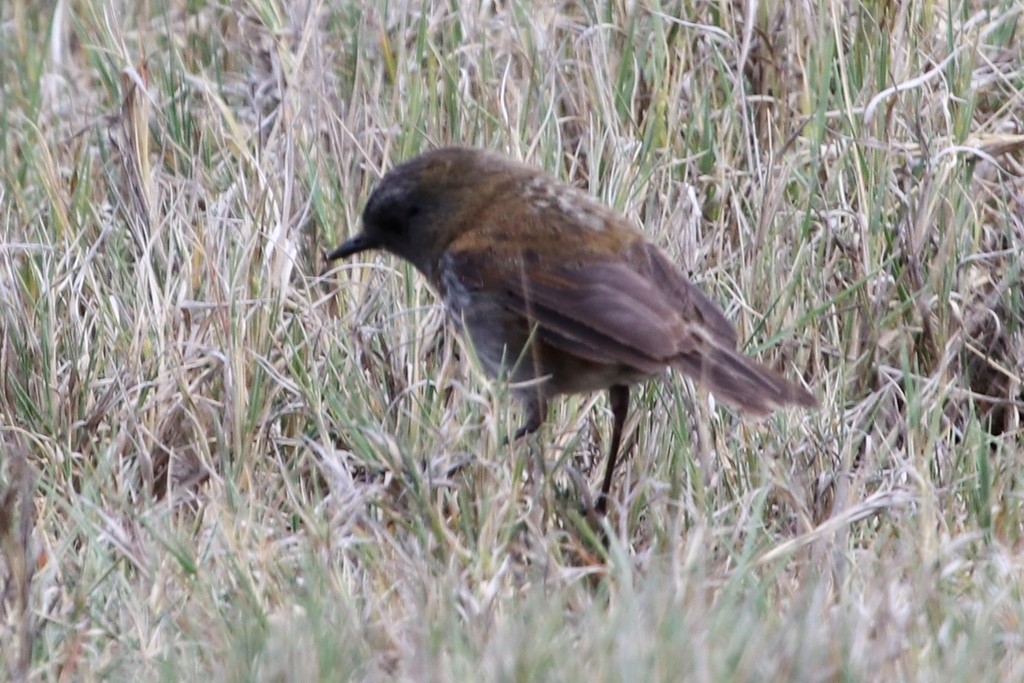Black-billed Nightingale-thrush
A species of American Brown Thrushes and Nightingale-thrushes Scientific name : Catharus gracilirostris Genus : American Brown Thrushes and Nightingale-thrushes
Black-billed Nightingale-thrush, A species of American Brown Thrushes and Nightingale-thrushes
Botanical name: Catharus gracilirostris
Genus: American Brown Thrushes and Nightingale-thrushes
Content
Description General Info
 Photo By subhashc , used under CC-BY-NC-4.0 /Cropped and compressed from original
Photo By subhashc , used under CC-BY-NC-4.0 /Cropped and compressed from original Description
The black-billed nightingale-thrush (Catharus gracilirostris) is a small thrush endemic to the highlands of Costa Rica and western Panama. Its position in the genus Catharus is somewhat equivocal, but it is apparently closer to the hermit thrush than to the other nightingale-thrushes except the russet nightingale-thrush and/or the ruddy-capped nightingale-thrush (Winker & Pruett, 2006). It is found in the undergrowth of wet mountain oak forests and second growth, typically from above 1350 m altitude to patches of scrubbery beyond the timberline. The nest is a bulky lined cup constructed 1–5 m high in a scrub or small tree, and the typical clutch is 2 brown-blotched greenish-blue eggs. This small species is 13.5 to 16 cm (5.3 to 6.3 in) in length and weighs 21 g (0.74 oz). The adult has olive- brown upperparts, a grey crown, paler grey underparts, becoming whitish on the belly, and an olive breast band. Its bill is black. The juvenile is darker on the head and underparts, has a brown breast band, and the belly is marked with brown. The birds in the Chiriqui mountains of western Panama are slightly more rufous above and paler below than the Costa Rican population, and are sometimes considered as a subspecies, C. g. accentor. The black-billed nightingale-thrush will normally forage low in vegetation or on the forest floor, alone on in pairs, progressing in hops and dashes with frequent stops. It turns leaf litter in typical thrush fashion seeking insects and spiders, and also eats many small fruits. Despite its habitat, this species is tame and often confiding. The black-billed nightingale-thrush's song is up to three flute-like tones followed by a jumbled trill, and the call is a high thin seet. 
Size
16 cm
Nest Placement
Shrub
Feeding Habits
Black-billed Nightingale-thrush primarily feeds on small arthropods, insects, spiders, and various fruits. It exhibits foraging behaviors, searching the forest understory. Black-billed Nightingale-thrush is especially adapted to sifting through leaf litter for prey and has a preference for ripe, soft fruits.
Habitat
Black-billed Nightingale-thrush is typically found in the cool, humid, and high-altitude montane forests and páramo regions, where dense, mature forests dominate. This species thrives not only in undisturbed habitats but also in various stages of forest succession, including second-growth forests and small forest patches. Moreover, black-billed Nightingale-thrush is known to occupy thick páramo shrubbery and occasionally ventures into nearby open areas like pastures or along roads and trails, usually for foraging purposes. Their habitat distribution spans broader montane regions, emphasizing a consistent requirement for forested environments.
Dite type
Insectivorous
General Info
Feeding Habits
Bird food type
Scientific Classification
Phylum
Chordates Class
Birds Order
Perching birds Family
Thrushes Species
Black-billed Nightingale-thrush